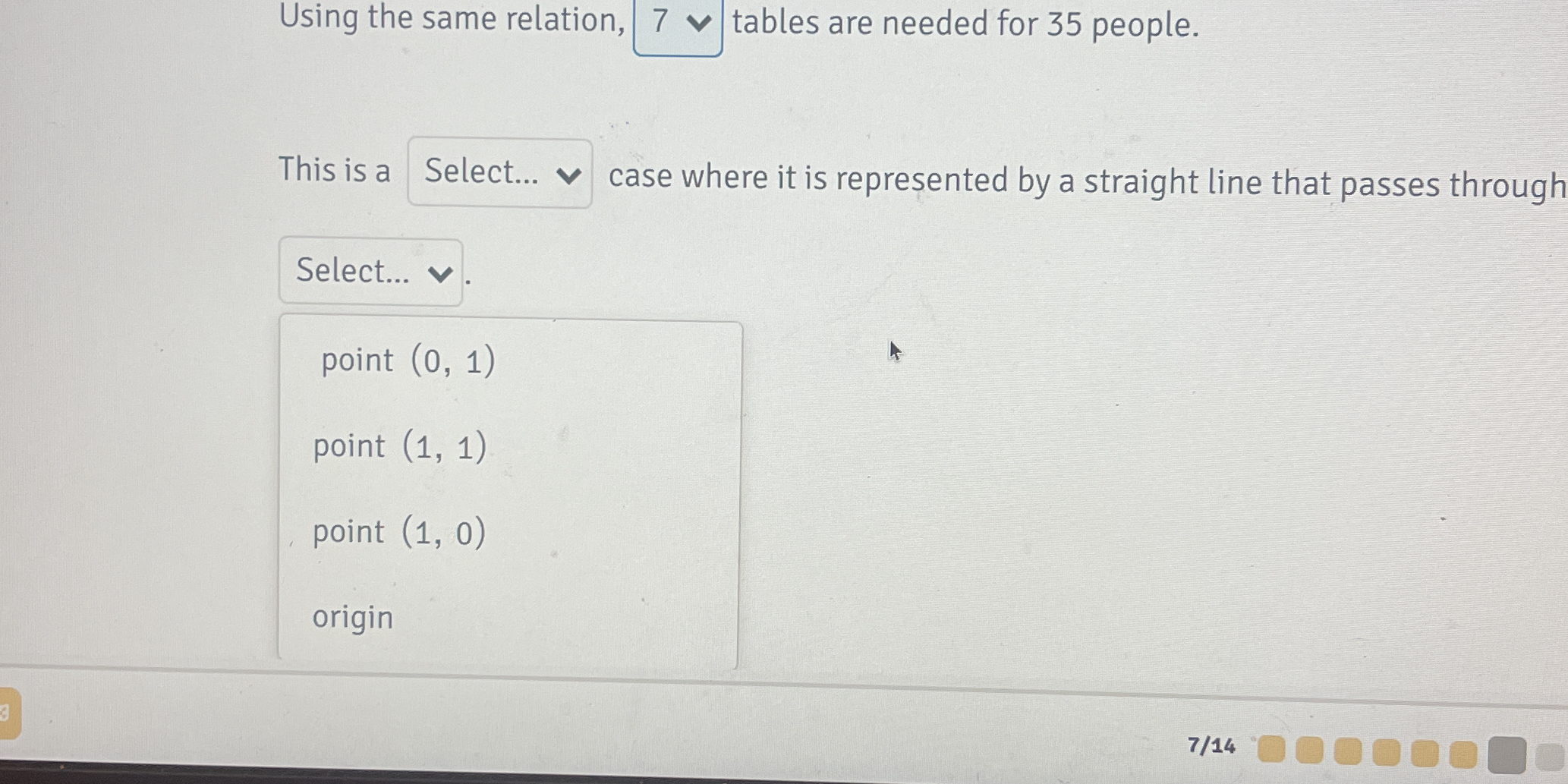Using the same relation, 7 tables are needed for 35 people. This is a Select... case where it is represented by a straight line that passes through.

Understand the Problem
The question asks to identify a mathematical case related to a specific scenario where a straight line passes through a point. The user needs to select from given options of points after determining the context of the question.
Answer
Origin (0, 0)
Answer for screen readers
Origin (0, 0)
Steps to Solve
-
Identify the relationship Understand the scenario given: using the relation that 7 tables are needed for 35 people. This indicates a linear relationship between the number of tables and the number of people.
-
Find the equation of the line The relationship can be expressed as a ratio: $$ \frac{\text{tables}}{\text{people}} = \frac{7}{35} $$ This simplifies to: $$ \text{tables} = \frac{1}{5} \times \text{people} $$
-
Determine points on the line From the equation, we can identify points that would lie on this line:
- When people = 0, tables = 0: (0,0)
- When people = 35, tables = 7: (35, 7)
- Analyze provided points Now, look at the provided options:
- Point (0, 1): Not on the line
- Point (1, 1): Not related to the established ratio
- Point (1, 0): Not on the line
- Point (1, 1): Not related
- Origin (0, 0): This clearly lies on the line
- Select appropriate option The only point that represents a case where it is a straight line that passes through is the origin (0, 0).
Origin (0, 0)
More Information
In this problem, the relationship between the number of tables and people is linear, defined by the equation derived from the ratio of tables to people. The origin is a common point in such linear equations, representing the case where no resources are needed for zero people.
Tips
- Selecting points that do not satisfy the line equation.
- Misunderstanding that only points on the defined line are valid.
AI-generated content may contain errors. Please verify critical information